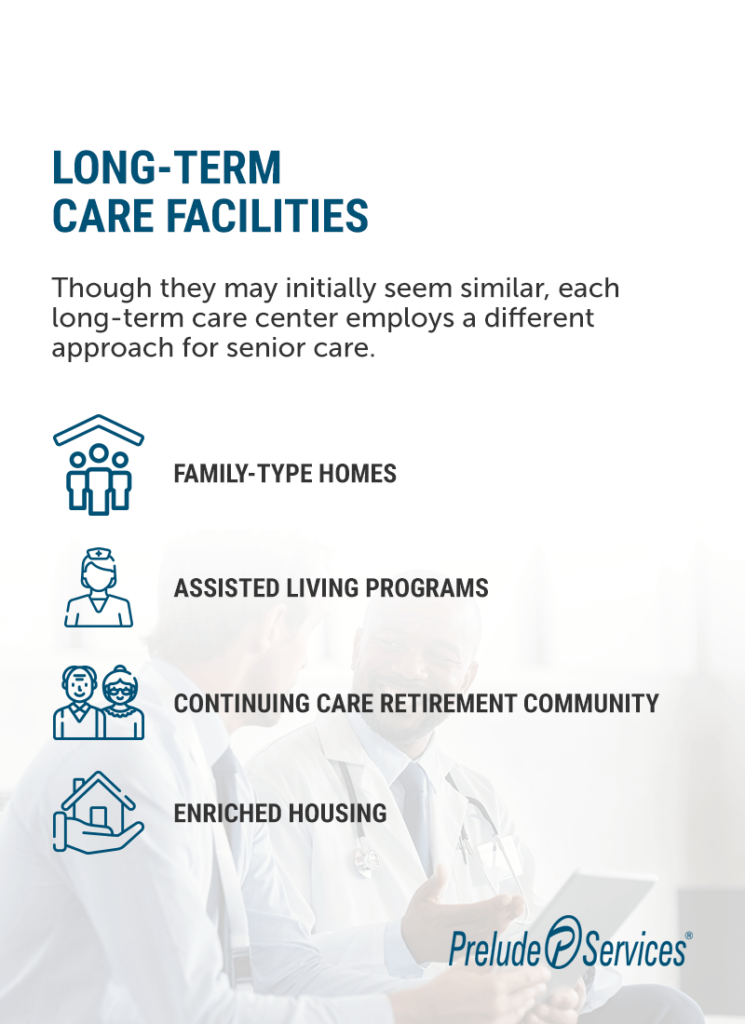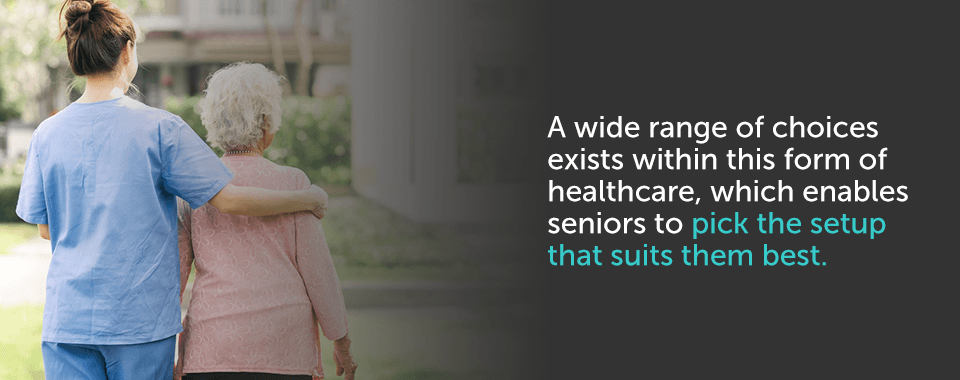
The Differences Between Post-Acute and Long-Term Care
Though some within the healthcare industry refer to long-term and post-acute care by the same name, they entail separate things. What is the difference between long-term care and acute care? How do trends in information technology fit within both of these sectors? Learning these distinctions is essential for enhancing patient care and healthcare provider efficiency, among many other things. With a better understanding, the medical industry can make necessary improvements within these fields, as well as the entire sector.
What Is Post-Acute Care?
Post-acute care (PAC) encompasses the services people typically receive while recovering from an injury, illness or surgery. This care can occur on either a long- or short-term basis, but it’s not the same as the long-term care discussed here. Its primary purpose is to help people rehabilitate and restore their original functioning. Post-acute facilities can either be freestanding or part of a larger unit. Many of them are outpatient facilities, though some programs also accommodate homebound patients.
Post-acute care can include anyone of any age who requires rehabilitation services, whereas long-term care is mostly associated with older adults. Many acute hospitals have created partnerships with post-acute care facilities to track patients after they transition to PAC. These agreements ensure patients receive proper transitional care for faster recovery.
POST-ACUTE CARE FACILITIES
Four basic types of post-acute care facilities exist, and within those, post-acute levels of care vary. Some facilities accept more intensive cases that require a larger medical team and a more detailed treatment plan. These four kinds include:
- Skilled nursing facility (SNF): Anyone who has received at least three days of inpatient care during an acute hospital stay can receive SNF services. SNFs are also known as nursing homes, and their primary purpose is to provide continuous care for adults who can no longer live independently.
- Inpatient rehabilitation facility (IRF): IRFs combine hospital-level care with intensive rehabilitation to treat patients and help them regain their usual functioning.
- Home health agency (HH): HHs are for homebound patients who receive intermittent nursing and therapy.
- Long-term care hospital (LTCH): Patients who are suffering from severe injuries or conditions with a high-intensity care level tend to stay in LTCHs. The extended hospital stay provides them with the concentrated care they need to make a sufficient recovery.
BENEFITS OF POST-ACUTE CARE
Post-acute care services provide an extra level of assistance for people discharged from acute hospitals. If they experience a complication, it’s easier to get them the help they need before the problem worsens. They can also avoid hospital readmission, which helps them heal faster. Returning to their normal life on-schedule — or more quickly than they expected — is best for helping them settle back into their day-to-day functions.
Except for LTCHs, these facilities are often more home-like than acute hospitals, which can aid in patient recovery and comfort. Patient recovery can improve if a person feels they’re receiving adequate care even after leaving the hospital — which some people in the industry refer to as “service after the sale.”
In the debate of long-term acute care versus skilled nursing facilities, an SNF is better suited for therapy and residential living. LTCHs serve people with complex, comorbid conditions who need rigorous clinical care and specialized treatment. Though SNFs are more fitting overall for a comfort-first experience, the practice’s size also matters. Large buildings with a clinical quality could feel more impersonal, whereas small facilities with a residential home design may help patients trust their needs will be sufficiently met.

Despite its advantages, this form of healthcare does have a few challenges that can make it harder to access. For example, post-acute care insurance like Medicare Advantage (MA) doesn’t cover LTCHs or IRFs. MA networks often exclude providers of these intensive services, meaning the people who need them most may not have access to them.
Additionally, the prospective payment systems (PPS) for LTCHs and IRFs see much less Medicare spending than other types. IRFs and LTCHs receive $7.9 billion and $3.4 billion respectively, compared to $28.4 billion for SNFs and $17.7 billion for HHs. Higher spending could allow them to expand their facilities and upgrade their technology to serve patients better.
POST-ACUTE CARE TECHNOLOGY
Technology is a major part of PAC. Advanced technology helps healthcare providers do their jobs more efficiently and effectively, and it makes rehabilitation easier for patients and their families. Hospitals are also more willing to send individuals to post-acute care facilities that do their best to stay up-to-date with tech improvements, prioritizing successful tech integration and patient satisfaction.
Some types of tech that have become popular in healthcare facilities like these include contact-free sensors, robot-assisted therapy and electronic medical records (EMR). Continuous monitoring sensors allow medical providers to keep up with their patients’ vital signs without disturbing their comfort. Electronic medical records offer increased convenience for healthcare providers, enabling a team of medical professionals to seamlessly access and share patient info and streamline care.
Along with the spread of medical technology comes a need for stricter security measures. Unfortunately, healthcare network data breaches are not uncommon. In 2019, over 25 million patients’ information — including Social Security numbers and medical reports — was released due to a break-in within the billing service American Medical Collection Agency (AMCA) and its covered entities. High-quality network management services can minimize these kinds of events through security alerts, internet monitoring, fault identification and many more capabilities.
What Is Long-Term Care?
Individuals who receive long-term care may start at an independent living facility to age in place and then receive more services as they need them, such as assisted living or medical care. Medical professionals give individuals help with daily activities, medications and treatments. Long-term care for elderly people is generally about making their lives more comfortable than addressing acute, post-hospital conditions. Post-acute care focuses on those who need rehabilitation from a specific issue.

LONG-TERM CARE FACILITIES
Though they may initially seem similar, each long-term care center employs a different approach for senior care. Here are a few of the most common long-term care facilities and how they operate:
- Family-type homes: Each state’s Department of Social Services supervises operations for family-type housing, which provides long-term senior care for four or fewer adults who are unrelated to the facility operator. The long-term care administrator provides services within their own home instead of a separate facility. This setup is best for adults who can’t live alone anymore but don’t require skilled care.
- Assisted living programs: Assisted living programs are much like nursing homes, though they are more suitable for people who don’t need around-the-clock care. People often transition here from independent living apartments when they need medical and personal assistance. These centers can range in size from 25 to 120 residents, with each person receiving a specified level of care.
- Continuing care retirement community: CCRCs combine independent and assisted living. Elders can stay within the same area throughout the different stages of aging, which removes the hassle of acclimating to a new environment. These communities usually ask for an entry fee and collect a routine maintenance or service fee. Others use a model similar to rental communities. CCRCs offer a handful of contract models, including extensive, modified and fee-for-service.
- Enriched housing: Every U.S. state’s Department of Health oversees the region’s respective enriched housing programs. These buildings have a similar physical layout to independent living spaces, as each person gets their own housing unit. However, individuals still receive benefits like housekeeping and personal care.
BENEFITS OF LONG-TERM CARE SERVICES
Long-term care offers a host of benefits for those who use it. Much like post-acute care facilities, these buildings have a home-like feel and resemble residential living spaces. This quality is especially true in small-scale operations where individuals can pick their meals and customize their daily schedules. Small facilities, in particular, have a lower ratio of residents to staff, meaning every individual can receive the personalized attention they need to thrive.
Long-term care nursing homes offer a suitable place to recover for people who’ve just experienced an acute hospital stay, although most residents are permanent. Individuals can receive 24-hour skilled care and rehabilitation services. In general, long-term care facilities provide well-balanced meals, social activities and private rooms for maximum resident comfort. Some studies have suggested enriched housing could reduce hospitalization rates and the length of hospital stays for residents.
A five-year study of life plan communities — another term for CCRCs — revealed almost 70% of residents reported their social wellness somewhat or significantly improved. They also claimed enhanced physical activity, fewer chronic conditions and greater life purpose, among other positive outcomes. The layout and location of the long-term care facility also matter when considering heightened health outcomes.
LONG-TERM CARE INSURANCE AND TECHNOLOGY
Long-term care insurance covers the costs of several types of long-term care, including in-home, nursing home and assisted living care. It’s separate from regular health insurance and Medicare, and it’s recommended adults enroll to avoid paying out-of-pocket for custodial care, as standard policies won’t cover it. Long-term care insurance providers include major companies like MassMutual, Northwestern Mutual and Bankers Life & Casualty.
Seniors aren’t the only ones who benefit from insurance, however. Small to mid-sized healthcare facilities can reap many advantages from investing in cyber liability insurance and enlisting the help of an IT support service. Cybersecurity insurance softens the damage of a data breach by reimbursing the practice for recovery and remediation, business income loss and many related aspects. Long-term care and PAC providers can be especially vulnerable to cyberattacks due to a lack of strict IT safeguards.
Guest networks are a particular point of interest for hackers, especially with the number of seniors now using home assistants and similar devices. An AARP survey showed 91% of people 50 and older use a computer, 80% own a smartphone and 13% use virtual reality technology. With more smart devices showing up in long-term care facilities, many practices are enabling guest networks for easier Wi-Fi access, particularly for visiting relatives.
Though useful, this trend toward high technology can allow malicious individuals to enter a network through hot spots. Some can even physically hack into a community’s systems through Ethernet jacks, which are customary in old buildings. Software support services can enhance database and software performance so programs can withstand attacks from hot spot entry points. Hardware upgrades also remove vulnerabilities that could otherwise become bigger issues if exploited by determined cybercriminals.
Types of Post-Acute Care
The type of post-acute care facility a person is admitted to depends on what kind of health issue they need care for. What is considered post-acute care among healthcare providers? And which health problems are significant enough to warrant a stay in a separate facility? Here are a few conditions someone would require long- or short-term personal assistance for:
- Amputations: Post-acute care programs for people with newly amputated limbs may involve stump care, pain management, use of prostheses and muscle strength exercises.
- Severe wounds: Post-acute care covers wound treatment or management for chronic wounds like diabetic ulcers. Nutritional therapy is often a part of this strategy.
- Burns: Those in burn recovery undergo strengthening and stretching exercises and wound care. A medical professional may help them with moisturizing their skin, redressing bandages and performing physical activities.
- Stroke: Someone who’s suffered a stroke may need help regaining mobility, speech abilities and other skills. They may follow an integrated healthcare plan that merges a range of treatments, such as occupational and physical therapy.
- Neurological disorders: People with neurological conditions may need speech or occupational therapy to regain cognitive function, improve their mobility and restore their communicative abilities. Occupational therapy can be effective for various things, including fostering problem-solving skills and diminishing cognitive limitations.
Types of Long-Term Care
Long-term care can range from life plan communities to at-home programs. A wide range of choices exists within this form of healthcare, which enables seniors to pick the setup that suits them best. Those who receive home-based care may use services such as:
- Senior companion programs
- Senior transportation
- Personal care and homemaker services
- Emergency medical alert systems

Assisted living programs offer medication monitoring, emergency care and recreational activities among their many benefits. CCRCs provide many of the same perks as other long-term care options while still enabling older adults to feel independent. SNFs and assisted living programs are the most intensive long-term care types, offering skilled medical assistance for individuals who need higher levels of care.
Contact Prelude Services for Effective IT Solutions Within Long-Term Healthcare
Prelude Services can help you with numerous technological challenges related to healthcare, including cybersecurity, network management and IT risk management for privacy laws. When families entrust their relatives to your healthcare practice, they trust you’ll provide the utmost security — including guarding sensitive information and efficiently addressing IT vulnerabilities. A trustworthy healthcare center invests in cybersecurity management as much as it invests in its patients.
Whether your long-term care organization needs outsourcing support or enterprise reporting tools, Prelude Services can provide high-quality security management every time. Contact us today for more information on how we can help you streamline operations and strengthen cybersecurity measures.
CONTACT PRELUDE SERVICES FOR 24/7 IT SUPPORT
Technology has become a crucial part of the modern business experience. Without functional computers and mobile phones, many business practices would grind to a halt. Unfortunately, breakdowns and malfunctions are an inevitable part of any machine, meaning businesses do grind to a halt until the issues are fixed. In order to keep your business running, it's crucial to have access to IT support when you experience technical difficulties.
If you're a healthcare company, long-term care provider, or small business in need of IT support at all hours, consider Prelude Services. We're a SSAE SOC
Compliant business dedicated to improving your security and functionality. We offer specific IT services for senior living care, nursing homes, retirement home services and assisted living, including 24/7 IT support. If you want to know how Prelude can help you, contact us today!

